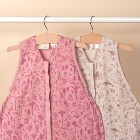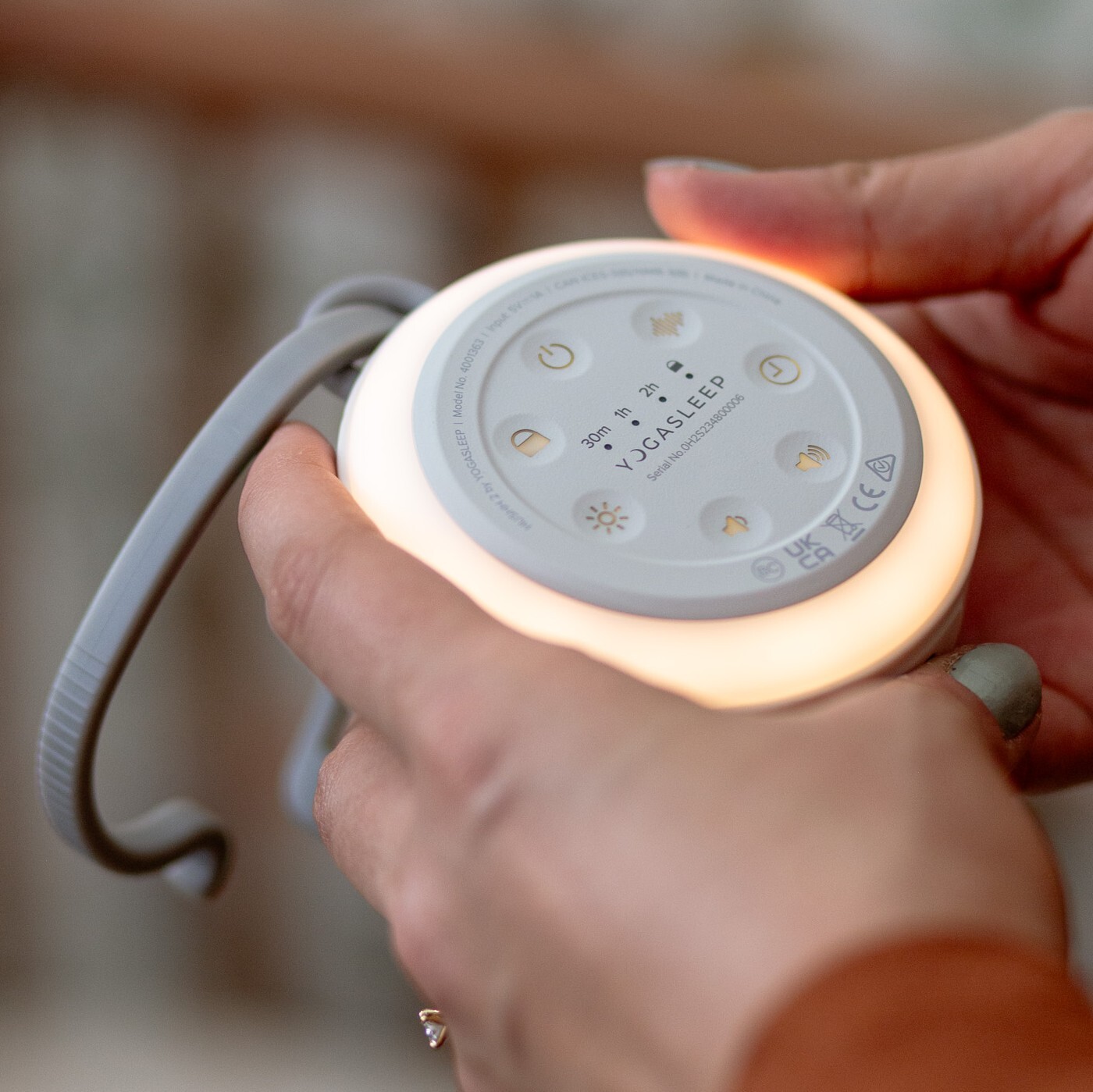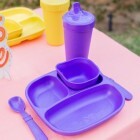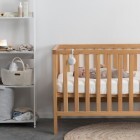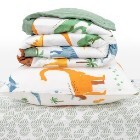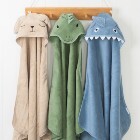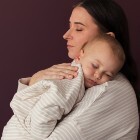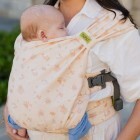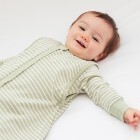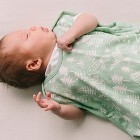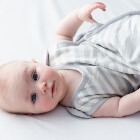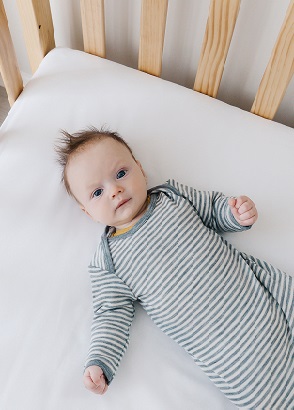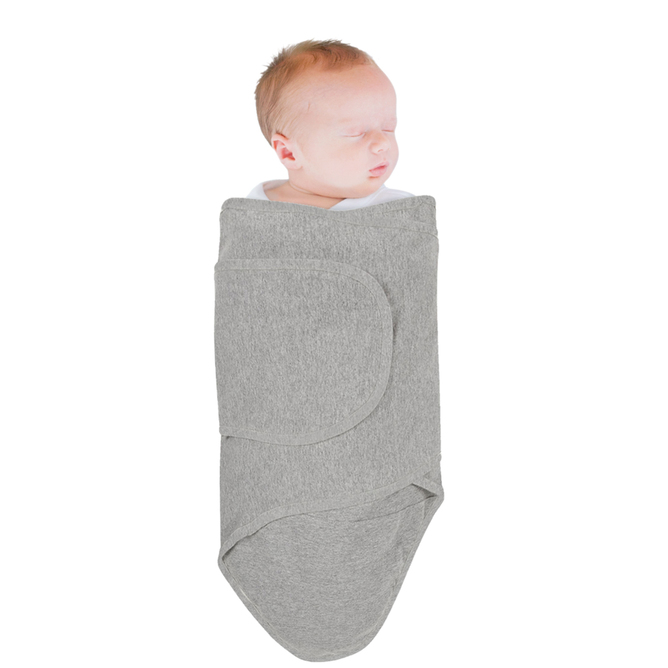Over-heating is one of the risk factors for SIDS, so it is essential parents are aware of how to ensure their baby doesn't overheat.
Avoid Overheating with your Baby
Studies have shown that thick clothing, too many layers and high room temperatures increase the risk of SIDS. While it may seem counterintuitive, infants are at higher risk of SIDS during the winter months. That’s because parents worry their baby may get cold and they try to prevent that by overdressing them or cranking up the heat. - Dr Harvey Karp
It is important to be well informed about overheating, so you can resist the poor advice and unsafe examples you'll see on social media. For example, bonnets look cute on Instagram babies but hats on sleeping babies are a real risk factor for overheating. Plus it is important to know to avoid buying the plastic based, polar fleece baby clothing and bedding common in chain stores, regardless of how cheap they are.
So read on to learn all about overheating and how to avoid this risk with your little precious.
Watch Top tips on how to avoid your baby overheating when sleeping
Temperature regulation
Babies can do little to regulate their own temperature. They can not cool themselves down or warm themselves up. However excess heat can escape through the head and under the arms, so avoid hats and heavy weight garments with sleeves, such as sleeping bags and heavy sleepsuits.
You'll need to ensure that your baby is dressed in the right layers of clothing, her bedding is appropriate and that her room is a suitable temperature. Bedrooms should ideally be between 18-20 degrees for comfortable sleep.
What are the signs of an overheating baby?
A baby who is too hot may be crying, red and sweaty and increasingly distressed. Babies who are too hot will find it hard to settle and sleep. You may also see a heat rash.
How to check if your baby is overheating
-
Touch your babies ears and neck.
-
If her ears are red and hot and her neck is sweaty, your baby is too warm.
-
Dress her more lightly, remove some bedding or cool the room.
-
Remove any synthetic bedding or clothing immediately and avoid using them in future (never use polar fleece or synthetic clothing or bedding with babies).
What are the causes of overheating?
Babies or children can become too hot and overheat from a range of factors. All of these can easily be avoided by parents being aware of the risk of what they are doing and understanding that the greater risk comes from the combination of risk factors.
For example, a baby would not overheat from having 5 cotton blankets on their cot in a cool bedroom but could easily overheat if they had 5 blankets and a polar fleece sleepsuit and the room was heated to 24 degrees!
All of these can contribute to overheating in babies and children:
-
using a hat while baby is asleep
-
too many layers of bedding
-
using synthetic bedding, such as polar fleece type blankets
-
using heavy duvets with babies
-
using a thick blanket or polar fleece blanket for wrapping or swaddling baby
-
using synthetic fabrics to swaddle baby
-
using too many layers of clothing
-
using thick layers on non-breathable clothing, such as polar fleece sleepsuits
-
using a sleeping bag that is too hot
-
using heavy-weight sleeping bags with arms on newborn babies
-
having the bedroom too hot
How to avoid overheating your baby
To avoid overheating, we strongly recommend the following:
-
Only sleep your baby in light layers of natural fibre clothing - merino, cotton, viscose from bamboo.
-
Choose merino clothing if you can, as it is the only fibre that helps regulate baby temperature
-
If you choose to use blankets, only use natural fibre light blankets - NEVER USE use polar fleece bedding with babies.
-
Keep the room temperature between 18-20 degrees if possible. If the room is warmer than 20 degrees, start reducing the amount of clothing and bedding used.
-
NEVER use a hat when baby is sleeping.
-
Choose a light swaddle made from 100% natural fibre - cotton or merino.
-
Always consider the total number of layers including the swaddle! You likely won't need a swaddle AND blankets unless it is very cold.
-
If your baby is red or sweaty, remove layers of clothing or bedding as soon as possible.
-
Monitor the room temperature with a gro egg, these make it very simple to see the colour coded light - red or orange is too hot, yellow just right, blue too cold.
Natural fibres
We urge you to always choose natural fibres for your baby's clothing and bedding. In particular, we highly recommend choosing merino as it is the only fabric that can help to regulate your baby's temperature.
Natural fibres include:
-
merino
-
wool
-
cotton
-
viscose from bamboo
-
muslin (made from cotton or viscose)
Avoid polar fleece at all costs
Yes polar fleece is warm and fluffy, and most people choose it because it is cheap. But it is made from plastic, it is like wrapping or dressing your baby in plastic. Imagine how hard is it for your baby to be a comfortable temperature if your baby was wrapped in gladwrap......Polar fleece is NOT appropriate for babies to wear or use for bedding, and it can certainly contribute to overheating.
If you are on a tight budget, we recommend joining the Facebook group for 2nd hand merino sales, shop at your local opp shops for merino and wool garments, hunt around the cheaper chain stores for discount merino and keep an eye out for our great specials. We also have seconds or samples for sale in our Outlet Store.
Swaddling & overheating
It is essential to state that swaddling alone does not cause over-heating. We firmly disagree with the information some new or expecting parents are being given that swaddling causes overheating and is therefore a SUDI/SIDS risk and should be avoided.
As above, overheating is caused by baby getting too hot from a number of possible factors, such as using too much bedding, the room being too hot, dressing your baby in plastic type polar fleece or baby wearing a hat in bed.
Swaddling can reduce the risk of SIDS or SUDI by helping babies to stay sleeping safely on their back and avoid accidental suffocation. It also helps reduce parental stress, shaken baby injuries, post natal depression and helps extend breastfeeding.
If you have any questions about swaddling and safety, please ask or read our related article on swaddling safety. Or we strongly recommend reading this excellent article from Dr Harvey Karp, leading American pediatrician, swaddling expert and Fellow of the American Academy of Pediatrics.
Recommended Swaddles
Recommended Articles
Top Tips on how to avoid your baby overheating when sleeping
This is probably one of the major concerns of every parent. Here are some top tips from our three Sleep Store sleep coaches about how to avoid overheating with your baby. How do you keep your baby cool in hot weather? It's important to consider the room temperature and what you dress your baby in for bedtime. Featuring, Lousie, Andrina and Maria. For more information read our expert article: NZ: http://bit.ly/2tkiLq4 AUS: http://bit.ly/2u0tIxu
https://i3.ytimg.com/vi/GVFs2Gilee0/maxresdefault.jpg
2019-12-31
PT1M37S
The Sleep Store
https://cdn11.bigcommerce.com/s-ejs8jv4vgh/images/stencil/239x52/logo-small_1582001262__84777.original.jpg
https://youtu.be/GVFs2Gilee0


